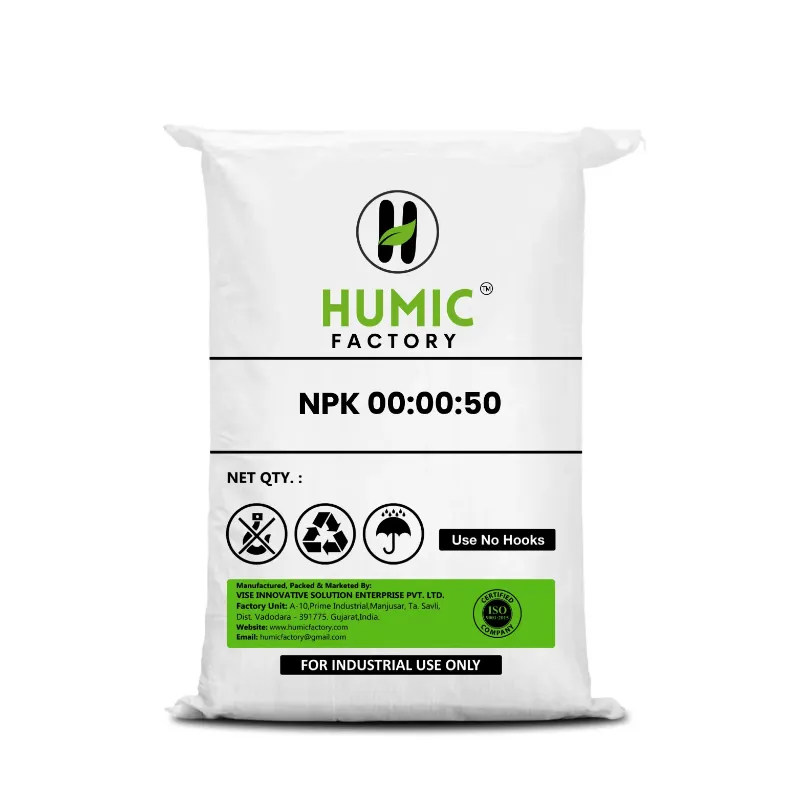Humic acid plays a significant role in improving soil structure and fertility through various mechanisms that enhance soil physical, chemical, and biological properties. Its unique properties and interactions with soil components contribute to the formation of stable soil aggregates, increased nutrient availability, and enhanced microbial activity, ultimately leading to improved soil fertility and productivity. Here are several key ways in which humic acid improves soil structure and fertility:
1. Formation of Stable Soil Aggregates:
Humic acid acts as a binding agent that promotes the formation of stable soil aggregates. It interacts with soil particles and organic matter, forming bridges between them and facilitating the aggregation process. These stable aggregates humic aci improve soil structure by enhancing soil porosity, water infiltration, and aeration. Improved soil structure promotes root growth, microbial activity, and nutrient cycling, leading to increased soil fertility and productivity.
2. Enhanced Water Retention and Drainage:
Humic acid improves soil water retention and drainage by increasing soil organic matter content and enhancing soil structure. It promotes the formation of soil aggregates. Which reduce soil compaction and increase soil porosity, allowing soil to retain more water. Additionally, humic acid has water-holding capacity due to its ability. To absorb and retain moisture, making it beneficial for plants, especially in drought-prone or sandy soils.
3. Increased Cation Exchange Capacity (CEC):
Humic acid has a high cation exchange capacity (CEC). Which refers to its ability to attract, bind, and exchange positively charged ions (cations) in soil. This increased CEC allows humic acid to retain nutrients such as calcium, magnesium, potassium, and trace elements in the soil, preventing their leaching below the root zone. By increasing nutrient retention and availability, humic acid improves soil fertility and provides essential nutrients for plant growth and development.
4. Chelation of Nutrients:
Humic acid forms complexes with nutrients, such as micronutrients like iron, zinc, and manganese, through chelation. This process involves the binding of metal ions to functional groups on the humic acid molecule, forming stable complexes that protect nutrients from becoming chemically unavailable or immobile in soil. By chelating nutrients, humic acid enhances their solubility and availability for plant uptake, contributing to improved soil fertility and plant nutrition.
5. Stimulation of Microbial Activity:
Humic acid stimulates microbial activity in soil by providing a favorable environment for beneficial soil microorganisms, including bacteria, fungi, and actinomycetes. These microorganisms play crucial roles in nutrient cycling, organic matter decomposition, and soil structure formation. By promoting the growth and activity of these beneficial microorganisms, humic acid enhances soil fertility, improves nutrient availability, and supports overall soil health and productivity.
6. Promotion of Root Growth and Development:
Humic acid stimulates root growth and development by enhancing root elongation, branching, and proliferation. It contains bioactive compounds, including phytohormones, amino acids, and vitamins, which promote root growth and improve nutrient uptake. Additionally, humic acid increases the availability of essential nutrients in the root zone, providing plants with the necessary resources for healthy root development and optimal growth.
7. Reduction of Soil Erosion:
Humic acid helps reduce soil erosion by increasing soil stability and resistance to erosion. By promoting the formation of stable soil aggregates and improving soil structure, humic acid reduces soil susceptibility to erosion by wind and water. This helps protect soil quality, prevent nutrient loss, and maintain ecosystem stability in agricultural landscapes.
8. Environmental Sustainability:
The use of humic acid in agriculture promotes environmental sustainability by improving soil fertility, reducing nutrient runoff, and mitigating environmental pollution. By enhancing soil structure and nutrient retention, humic acid reduces the need for chemical fertilizers and pesticides, minimizing the risk of nutrient leaching, groundwater contamination, and environmental degradation.
In summary, humic acid improves soil structure and fertility through various mechanisms, including the formation of stable soil aggregates, increased water retention and drainage, enhanced cation exchange capacity, chelation of nutrients, stimulation of microbial activity, promotion of root growth and development, reduction of soil erosion, and environmental sustainability. These benefits make humic acid a valuable soil amendment for improving soil health. Enhancing crop productivity, and promoting sustainable agricultural practices.





